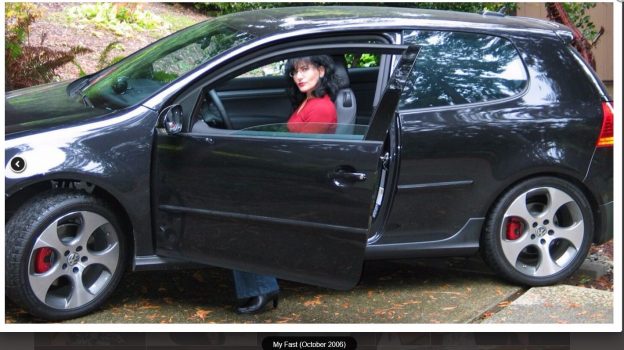Today a mysterious package arrived from Volkswagen. In it was a gloriously ugly onyx gargoyle with the following instructions for the driver of that devil, the GTI:
Dear Ms. Ilana Mercer,
This is your fast. Make sure it gets plenty of exercise.
All the best,
Volkswagen
Here you can view some ads with “fast” in the background. Lefty magazines have crowed about the anti-fem angle of the commercials. The emphasis on speed has displeased the same habitual joy killers: “irresponsible” they call it.
Volkswagen has tapped into something. “Fast” sounds a lot like my alter ego when I drive Turbo-Toad (that’s my GTI). My husband will attest to the fact that, as welcome as “Fast” is on the dashboard—ears pinned back by the wind (“they channel air away from fast’s face and off his back,” says the instruction pamphlet “Fast” came with)—I didn’t need him to remind me of my mission when driving the GTI.
Update: Pursuant to the comments hereunder, I have to ask, Why is the love of fast, fabulous cars equated with youth and folly? This country worships youth and thinks of looking good, having fun, or driving a fast car as the prerogatives of youth. Rubbish. Besides which mature drivers who’ve been on the road for a while are the real good drivers. By the way, as this great article makes clear, the GTI is just a magnificent car. Not only does it have a tremendously powerful, brilliantly engineered engine, it is accoutered with safety features and luxuries absent in many a sports car. As for my being a bit childish; big deal. So where was I? Fast comes with 4 tails. He has the devilish badboy tail on today; I may change it soon.
(Be sure to rev up with the preceding blog post, Glorious GTI)


